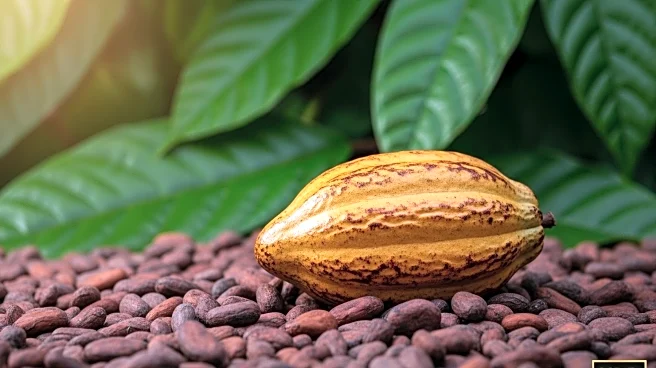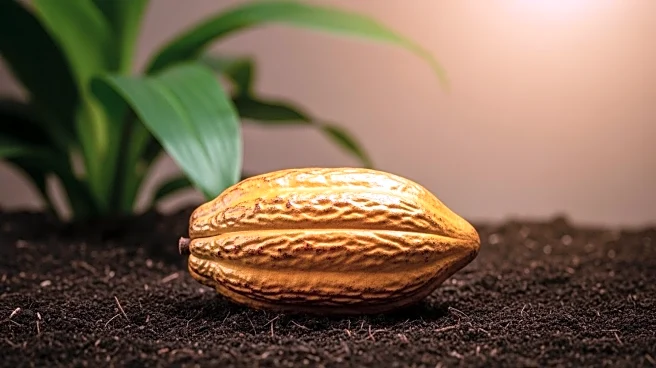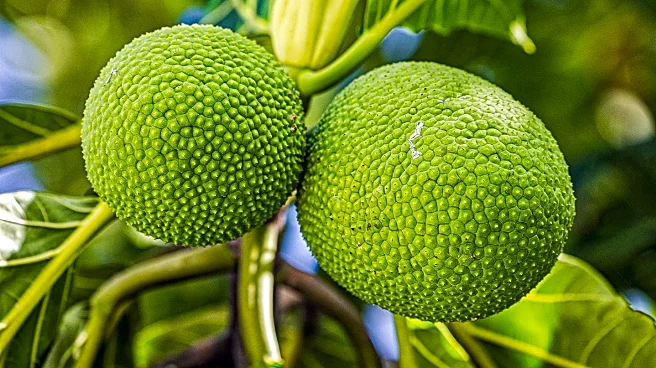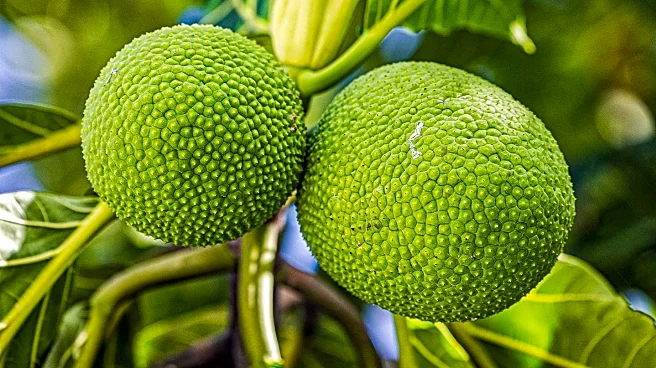What's Happening?
Chocolate prices have surged significantly, impacting Halloween candy purchases. The price of cocoa, a key ingredient in chocolate, has more than doubled since early 2024, driven by adverse weather conditions affecting cocoa production in West Africa. Heavy rains in late 2023 led to crop diseases, followed by droughts in 2024, severely reducing cocoa output in the Ivory Coast and Ghana. Additionally, increased transportation, fuel, and labor costs have contributed to the price hike. As a result, consumers are expected to spend $3.9 billion on Halloween candy, with many opting for cheaper alternatives like gum and hard candy.
Why It's Important?
The rise in chocolate prices has broader implications for consumers and the confectionery industry. With cocoa supply disruptions and increased production costs, chocolate manufacturers may need to adjust their product offerings, potentially substituting ingredients or reducing package sizes. This situation highlights the vulnerability of global supply chains to environmental factors and economic pressures. Consumers, particularly those planning large-scale Halloween events, face higher expenses, which could affect spending patterns and holiday traditions. The sustained high prices may also impact retail strategies and consumer behavior in the confectionery market.
What's Next?
Chocolate prices are expected to remain elevated for at least another year, as new cocoa crops take time to mature. Investments by manufacturers in planting new crops will take three to five years to yield results, potentially stabilizing supply and prices in the future. In the meantime, consumers may continue to seek alternative candies or adjust their purchasing habits. Retailers and manufacturers might explore innovative solutions to manage costs and maintain consumer interest during holiday seasons.
Beyond the Headlines
The current situation underscores the importance of sustainable agricultural practices and climate resilience in global supply chains. As weather patterns become increasingly unpredictable, industries reliant on agricultural commodities must adapt to mitigate risks. This could lead to increased investment in research and development for climate-resistant crops and more efficient production methods. Additionally, the economic pressures on consumers may drive demand for more affordable and diverse confectionery options, influencing market trends and product innovation.












